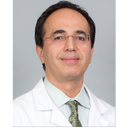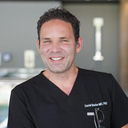Posted underBreast Augmentation q&a
Recovery Time For Subglandular Breast Augmentation With Areola Incision?
Answers (19)
From board-certified doctors and trusted medical professionals
Dr. Jaime S. Schwartz, MD, FACS

Dr. Jaime S. Schwartz, MD, FACS
Board Certified Plastic Surgeon
Answer
Dr. Asif Pirani, MD, FRCS(C)

Dr. Asif Pirani, MD, FRCS(C)
Certified Plastic Surgeon
Answer
Dr. Ali Sajjadian, MD, FACS

Dr. Ali Sajjadian, MD, FACS
Board Certified Facial Plastic Surgeon
Answer
Dr. Armando Soto, MD, FACS

Dr. Armando Soto, MD, FACS
Board Certified Plastic Surgeon
Answer
Dr. David Shafer, MD, FACS

Dr. David Shafer, MD, FACS
Board Certified Plastic Surgeon
Answer
Dr. Vincent N. Zubowicz, MD

Dr. Vincent N. Zubowicz, MD
Board Certified Plastic Surgeon
Answer
Dr. Ronald Schuster, MD

Dr. Ronald Schuster, MD
Board Certified Plastic Surgeon
Answer
Dr. James Knoetgen, III, MD
Dr. James Knoetgen, III, MD
Board Certified Plastic Surgeon
Answer
Dr. Glenn Vallecillos, MD, FACS
Dr. Glenn Vallecillos, MD, FACS
Board Certified Plastic Surgeon
Answer
More Breast Augmentation Questions
See all Breast Augmentation Q&AWE SEND PRETTY
EMAILS
What’s trending? Who’s turning heads? Which TikTok myths need busting? We’ve got you. No fluff, no gatekeeping—just real talk. Get our free, unfiltered newsletter.
